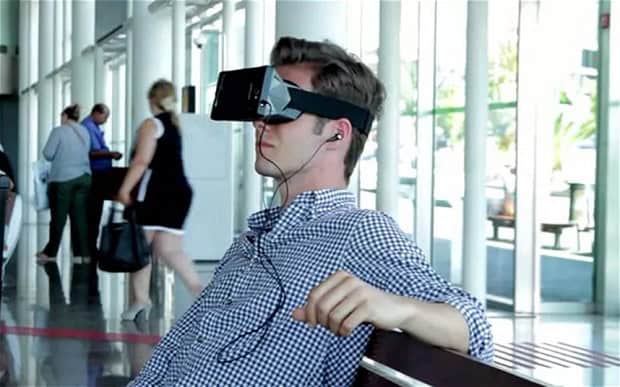Last week, Magic Leap chief executive Rony Abovitz caused a stir when he said that many virtual reality goggles can cause permanent neurological deficits.
Abovitz called out a certain type of headset called stereoscopic 3D. That happens to be the style used by his competitors, including Oculus, Microsoft and Samsung.
While answering questions on Reddit, he said that Magic Leap believes stereoscopic 3D “can cause a spectrum of temporary and/or permanent neurological deficits.” He added that “our philosophy as a company (and my personal view) is to ‘leave no footprints’ in the brain. The brain is very neuroplastic — and there is no doubt that near-eye stereoscopic 3d systems have the potential to cause neurologic change. . . . I personally experienced a number of these stereoscopic-3d issues — and would not wear these devices — especially knowing that digital light-field systems are on the way and safe.”
The mention of digital light-field systems is a reference to Magic Leap’s approach to augmented reality. The company, which received a $542 million funding round from Google, has been largely shrouded in secrecy. But we do know that its product will rely on a tiny projector that shines light in your eyes. On Reddit, Abovitz described it as a method that “respects the biology of the human eye-brain system in a profound and safe way.”
When I asked MagicLeap to clarify Abovitz’s remarks, it pointed me toward the warnings associated with the virtual reality goggles from Samsung and Oculus, plus research highlighting the symptoms that can come from wearing a 3D stereoscopic headset.
“What we’re trying to do is raise awareness of the need to have a higher level of sensitivity to the potential negative impacts that technology can have on the body within this category specifically,” Abovitz said. He also said that after using a stereoscopic 3D device for two to three hours, he experienced double vision, and loss of focus for a day.
Although it’s true that virtual reality systems can trigger a range of unwanted symptoms such as fatigue, headaches and nausea, there’s no evidence that wearing stereoscopic 3D goggles creates permanent health issues, writes ‘The Washington Post’.
“There’s no real smoking gun here,” said Martin Banks, a professor of optometry and vision science at the University of California at Berkeley. (Banks happens to be one of the authors of a research paper MagicLeap sent to me.) “But people are making these rather brash statements about potential health concerns and stuff as if there’s a smoking gun. I don’t see it. All these claims that are made, there’s not much there.”
The problems associated with wearing a 3D stereoscopic headset come from one of two things: the vestibulo-ocular reflex and vergence-accommodation conflicts.
If a virtual reality headset isn’t designed well, what the wearer sees will not adjust fluidly as the viewer moves her head from side to side. This can result in those unpleasant symptoms. Some may remain for a short period immediately after the headset is removed. Activities such as driving a car aren’t safe until the symptoms disappear. But there’s no proof of any permanent neurological change.
The second issue with virtual reality headsets is vergence-accommodation conflicts. (Given the nature of MagicLeap’s system, users will not suffer from this.) Vergence prevents us from seeing double. Our pupils move toward or away from each other, depending on whether the object we’re looking at is closer or farther away. With accommodation, the lens in the eye flattens or thickens so that we can focus on what we’re looking at.
We evolved for these systems to work in parallel. In the real world you want to see a single image, and you want it to be sharp. But when you’re wearing 3D stereoscopic goggles, the system is disrupted. Your eyes may be converging in front of the screen to see an image simulated there, but to sharpen that image the eyes must focus on the screen. Hence the negative side effects for some viewers.
Clifton Schor, professor of vision science and optometry at the University of California at Berkeley, says that in the long term, if anything, users’ vision will benefit. He compared wearing 3D stereoscopic goggles to lifting weights.
“They’re probably strengthening their eyes by doing that,” Schor said. “They’re making them stronger because that’s exactly what we do to strengthen the eye.” Orthoptics, a treatment for vision problems such as squinting, lazy eyes and movement disorders, uses vergence-accommodation conflicts to improve vision.
So if you ever have a chance to test virtual reality googles, certainly be aware of potential short-term side effects. But don’t be scared away by talk of threats to your long-term health.














